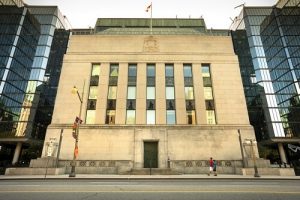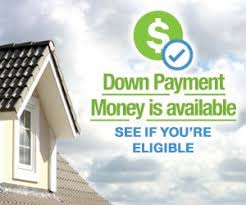
RENEWING VS. REFINANCING A MORTGAGE
What’s the difference between refinancing and renewing your mortgage? The terms are often used interchangeably, but they are different processes:
Renewing a mortgage applies to the current mortgage loan. You will be looking for a new term and interest rate based on the amount remaining in your mortgage at the end of your term. This is a great time to look at ways to reduce the principal amount by making a lump sum payment or changing payment amount and frequency.
Refinancing a mortgage is a renegotiation of an existing mortgage loan and is usually used to access the equity in the home or take advantage of better mortgage terms. It’s a more involved process than renewing, especially if the loan amount is changing because it is essentially a new mortgage.
REASONS TO REFINANCE A MORTGAGE
There are many reasons you may wish to refinance your mortgage. For example:
You may be in the middle of a higher interest term and want to take advantage of a lower rate. Although there may be prepayment penalties to get out of the current mortgage, it might be worth it for the long-term savings of a lower rate. Your mortgage broker can help you weigh the options.
If you have a lot of high-interest debt, you may wish to refinance and consolidate your debt into a single payment at a lower rate.
You may wish to access the equity in your home to fund a renovation, purchase a second property, or invest.
PROS AND CONS OF REFINANCING A MORTGAGE
There are advantages and disadvantages to refinancing a mortgage. What you consider a benefit depends on your situation. Here are some things to consider:
Additional costs of refinancing
When you refinance your mortgage, there may be some additional fees to keep in mind. Depending on how close you are to the end of your mortgage term, there might be penalties for paying out your term early. Your lender may also require you to get an appraisal on your home because the amount they will refinance is based on the current appraised value.
Peace of mind from refinancing
Finances can be a major stressor and removing financial pressure is priceless. Consolidating debt into a single monthly payment has its benefits. You’ll likely spend less of your monthly budget on debt payments, and you won’t be juggling your money trying to pay down multiple debts (which may pay more toward interest than principal). That said, if you can’t manage your debt payments now and you’ll be paying roughly the same with the new mortgage, you’re putting your home at risk.
The new interest rate on a refinanced mortgage
When you refinance, you’ll be doing so at current interest rates. Are they higher or lower than what you have now? Sometimes it’s worth breaking your current mortgage term because the interest savings will more than cover the pre-payment penalties. Even a slightly higher rate might be okay if you’re consolidating a lot of high-interest debt. Either way, do the math with an experienced mortgage broker who can help you weigh your options.
Longer amortization
Refinancing may mean you’re stretching out your amortization to keep the payments affordable. Before you commit, look at your entire financial picture. For example, will it affect your retirement?
Requalifying for a refinanced mortgage
Refinancing your mortgage to incorporate debt means you’ll need to qualify for the new mortgage amount. If your circumstances have changed and you don’t think you’d qualify with a traditional lender, talk to your mortgage broker about alternative lenders.
Alternative lenders are refinancing experts and will work directly with your broker to understand the story behind the refinance and find a solution. They are more willing to consider self-employment and non-traditional sources of income, and they are also a little more flexible with debt ratios.

HOW MUCH CAN YOU BORROW AGAINST THE EQUITY IN YOUR HOME?
Generally, the amount you can borrow is 80% of the appraised value of your home. This is the current market value, not the amount you paid when you purchased it.
The formula is:
(Value of home x 0.80) – Remaining mortgage amount – Loans secured against home = Home equity
Multiply the value of your home by 80% (0.80).
Subtract the amount remaining on your mortgage.
Subtract any other loans you have secured against your home, such as a line of credit.
The amount remaining in the equity you have in your home.
For example, if your home is valued at $400,000 today, multiply that amount by 0.80 to get $320,000. Now if you have $150,000 left to pay on your mortgage, subtract that to get $170,000. Now let’s say you have an RV or car loan for $20,000 secured against your home. That gives you $150,000 of equity in your home.
($400,000 x 0.80) – $150,000 – $20,000 = $150,000
REFINANCING A MORTGAGE IS NOT A HELOC
You might be wondering, “Why not just get a home equity line of credit (HELOC) instead of refinancing?” You could, but there are some advantages to refinancing.
Both options will give you access to the same amount of equity in your home.
Both options will likely require an appraisal and take about the same amount of paperwork.
Refinancing will probably give you access to the money at a lower interest rate.
Refinancing gives you access to the funds one time. A HELOC allows you to borrow, pay back, and borrow again. If you’re borrowing to consolidate debt, you might be better served by refinancing so that your only option is to repay it (and not re-spend it).
WORK WITH YOUR MORTGAGE BROKER TO FIND YOUR BEST OPTIONS
Refinancing your mortgage is not as simple as visiting your bank. You should view it as though you are shopping around for a mortgage.

This is when you are well served by the expertise of a mortgage broker. First, we will do the legwork to find you and find the best rate you qualify for. we have relationships with both traditional banks and alternative lenders, which opens more options for terms and rates. A mortgage broker will also consider your immediate needs and your long-term goals when helping you select a mortgage. We are in your corner.
Michael Distefano
Mortgage Agent and Manager of operations
DLC BTB Mortgage Solutions FSCO 12039
Niagara’s largest Mortgage Broker
1-4687 Queen St Niagara Falls On L2E 2L9
T 905 357 5366 F 905 357 6654 C 905 246 5363
Download My FREE Mortgage Toolbox App https://www.dlcapp.ca/app/michael-distefano?lang=en
APPLY ONLINE ANYTIME
https://velocity-app.newton.ca/public/#/clientJourney/slides/home?shortCode=wb707fct93b4&lang=en-ca
Check out our full line of DLC Visa cards http://betterthanbankmortgage.com/visa-cards/





 By Steve Randall 25 Sep 2019 Broker News
By Steve Randall 25 Sep 2019 Broker News


